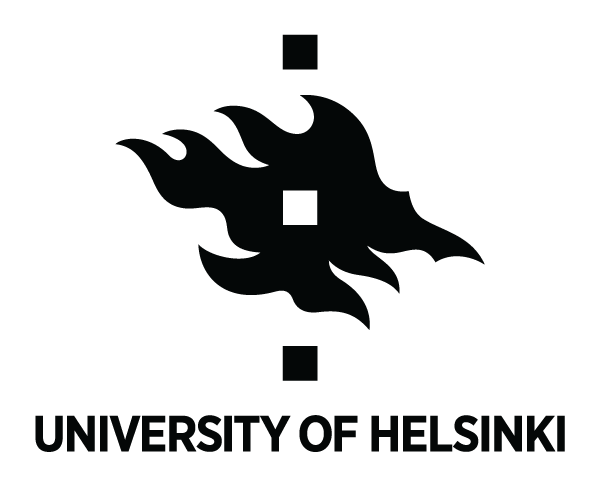Our current food production and consumption practices are confronted by big environmental and societal challenges, such as the climate crisis, biodiversity loss, the moves toward a circular economy, and the increasingly common diseases of affluence. Food production needs to be increased to feed the growing population but the environmental load of food production needs to be decreased at the same time. There is a need for comprehensive solutions that simultaneously take into account the impacts of food production and consumption on the wellbeing of humans, society and environment as well as economic sustainability.
Work Package 1: Sustainable legume-supported agriculture
Work Package 2: Healthy and tasty legume foods
Work Package 3: The impacts of legumes on human nutrition and health
Work Package 4: Legume-friendly consumer and society
Work Package 5: Life-cycle assessment and cost-benefit analysis
Leg4Life project (Legumes for Sustainable Food System and Healthy Life) aims to conquer these challenges by increasing the cultivation of legumes that flourish in Finnish conditions (pea, faba bean, lupins, clovers) and by promoting their wider use in food and feed. Nitrogen-fixing legumes are important all-round players in many environmental and societal challenges. They are well suited for reducing the use of synthetic nitrogen fertilizers in agriculture, imported protein in animal nutrition and meat products in human diets. Therefore, with the help of legumes, it is possible to improve simultaneously both environmental and human health without jeopardising the economy.

The cultivation of legumes has a long history globally and in Finland, but despite their apparent advantages, the production and utilisation of legumes remain low. The many reasons for this include the lack of knowledge at both farm and processor levels, the perceived lower yield stability of legumes, the easy availability and low costs of fossil energy-based nitrogen fertilizers and feed sources, dull or sometimes unpleasant taste, gut discomfort caused by legume consumption and the lack of processing methods suitable for legumes. The Leg4Life project strives to overcome these challenges by developing, together with stakeholders, cultivation methods, animal feeding solutions and processing methods that result in tasty and easy-to-use legume products for consumers as well as for food services. It is also important to confirm the health, environmental and economic impacts of increased legume utilization in order to provide fact-based information for public discussion and decision-making.
Leg4Life is a joint project carried out by the University of Helsinki, Finnish Institute for Health and Welfare (THL) and Natural Resources Institute Finland (Luke) during 2019-2025. The project is funded by the Strategic Research Council of the Academy of Finland. Leg4Life collaborates with numerous stakeholders from primary production, food and feed industries, health, environmental and agricultural politics and consumer organizations. Leg4Life aims to achieve a comprehensive societal change towards healthier food system and climate neutral food production and consumption by increasing the use of legumes. There are five extensive work packages in the project that cover the whole food chain from field to dinner table, all researching legumes that thrive in Finnish boreal conditions.
Work package 1
Sustainable legume-supported agriculture
Leaders: Aila Vanhatalo and Asko Simojoki, University of Helsinki
Current farming methods often rely on the use of fossil energy-based, synthetic nitrogen fertilizers, which has resulted in monocultures, increased agricultural energy use and weakened biodiversity and soil structure. In contrast, legumes fix atmospheric nitrogen into the soil for free, without polluting the atmosphere, and the large-scale utilization of legumes could increase domestic protein production leading to improved protein security and decreased environmental footprint of agriculture.
In work package 1, we aim to develop cultivation methods that improve nitrogen utilization and we will also provide information on the effects of legume cultivation on nutrient leaching and greenhouse-gas emissions, thus making it easier for farmers to start legume production. We strive to increase both grain and forage legume use in dairy cow nutrition by exploring for example the possibilities to decrease methane emissions and improve nitrogen utilisation in milk production by designing and testing the supplementary feeding on legume-based diets.
Work package 2
Healthy and tasty legume foods
Leaders: Kirsi Jouppila and Susanna Kariluoto, University of Helsinki
The use of legumes in the human diets is often restricted by their perceived unpleasant “beany” flavour, sparse product selection, and the presence of compounds that decrease the absorption of nutrients (phytic acid and enzyme inhibitors), cause gut discomfort (raffinose-series oligosaccharides), or are toxic (lectins, vicine, convicine). These compounds can be successfully denatured or removed, but the conventional methods used often also decrease the nutritional value of food products.
In work package 2, we develop processing methods for producing safe, healthy and high-quality legume products that are easy and pleasant to use. Plant-based foods usually lack vitamin B12, however, it can be produced to legume products in situ by processing.
Work package 3
The impacts of legumes on human nutrition and health
Leaders: Satu Männistö, Finnish Institute for Health and Welfare and Essi Päivärinta, University of Helsinki
Finnish people over-consume red and processed meat and under-consume vegetables and fruits in relation to nutrition recommendations. A diet low in vegetables is related to increased death rate and risk of contracting cardiovascular diseases, type 2 diabetes and colon cancer. Legumes may be well suited for substituting part of animal-derived products in human nutrition, which could improve the healthfulness of the diets. Legumes contain large amounts of protein, fibre, minerals and vitamins, especially folate, of which Finnish people often get less than the recommended intake.
In work package 3, we examine the effects of legumes on human nutrition and health in clinical intervention studies and using epidemiological population-based datasets. We provide information on how replacing red meat with legumes affects the intake of nutrients, nutritional state, and the risk factors for and the incidence of diseases.
Work package 4
Legume-friendly consumer and society
Leaders: Toivo Muilu, Natural Resources Institute Finland and Hanna Konttinen, University of Helsinki
Consumer acceptance and support of the whole food supply system is crucial when aiming for a change towards a more plant-based diet including more legumes. Current consumption trends such as environmental awareness, increased interest towards well-being and healthy life support the increasing use of legumes. At the same time, the attitudes, habits, norms and meanings that affect consumers’ daily food choices are slow to change and can be a hindrance for increased use of legume-based foods.
In work package 4, we study attitudes, habits, needs and challenges related to the use of legumes in the whole food chain. We investigate consumers’ attitudes towards replacing red meat with legume-based products and its effect on food service portion sales and food waste. We examine whether it is feasible to encourage consumers to make healthier food choices by implementing subtle changes to the eating environment and we analyse how the increase in legume cultivation might affect agricultural and rural areas.
Work package 5
Life-cycle assessment and cost-benefit analysis
Leaders: Anna-Liisa Välimaa, Natural Resources Institute Finland and Kari Hyytiäinen and Chiara Lombardini, University of Helsinki
A food system based on large-scale utilisation of legumes can result in significant changes in the cultivation of crops, use of arable land, nutrient circulation, eating habits and the incidence of diseases of affluence as well as the environmental load related to food production and consumption. On a national level, the environmental effects of increased legume production and consumption on the whole food system are not well understood, while research on societal impacts is practically non-existent.
In work package 5, we examine the environmental, societal and economic costs and benefits of increased legume production, processing and consumption. With regards to environmental effects, we examine the carbon footprint, eutrophication of waters and use of arable land. Important social effects include the wellbeing, equality and health of different stakeholders (employees, local community, society, consumers) in the whole food chain. We examine the economic effects at both farm and society levels. With the help of risk analysis, we highlight the impacts of the elements of uncertainty, such as the scope of the health effects, on monetary estimations. The obtained knowledge will support decision-making processes by estimating the key benefits and costs in monetary terms of a switch toward a more legume-orientated food system.




